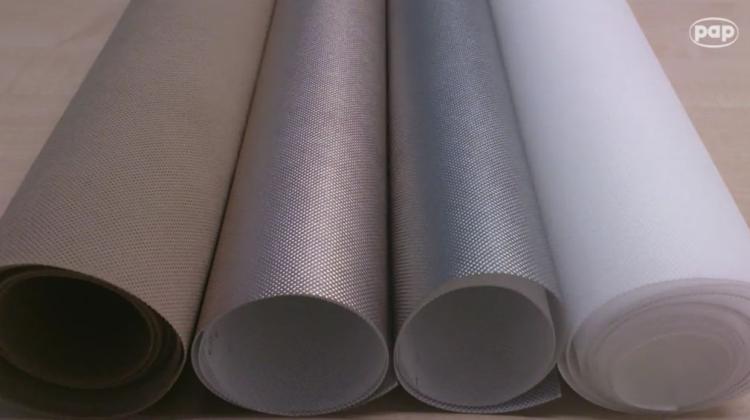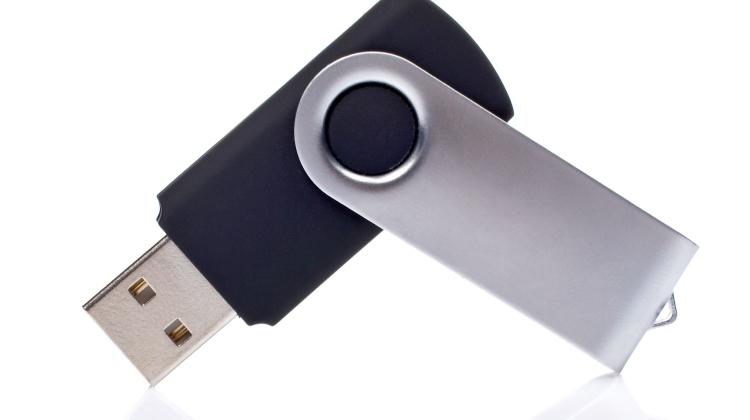New Polish materials may protect against tapping and data theft

Wallpaper and curtains to prevent tapping, covers preventing theft of data from smartphones - these are some of the possible applications of innovative textile materials developed at the Textile Research Institute in Łódź.
The materials could also be used to manufacture screens and covers to protect against electromagnetic fields generated by medical diagnosis equipment.
Scientists from the Textile Research Institute in Łódź developed barrier materials that dampen electromagnetic fields. They applied the magnetron sputtering technique to apply thin metallic coatings on textiles. The invention has been developed in cooperation with Wroclaw University of Technology.
Research on the modification of textiles conducted for years at the Textile Research Institute led to the development of materials for shielding (damping) electromagnetic fields (EMF), with electrically conductive elements introduced into their structures.
"The challenges of today\'s extremely electronised, the appearance of a very large number of electronic devices, both in medical diagnostics and in everyday life, such as microwave ovens, mobile phones, posed challenges that this damping should be greater than 30 dB depending on the frequency of the electromagnetic field, which is produced by the device" - told PAP the director of the Textile Research Institute in Łódź, Prof. Jadwiga Sójka-Ledakowicz.
Obtaining lightweight, easily arrangeable barrier materials was made possible by coating the textile product with a very thin metallic layers of conductive metals, their alloys or metal oxides. "We used the method of magnetron sputtering. The research in the Envirotex project allowed us to obtain arrangeable products with coatings consisting of various metals and their alloys" - she added.
The materials can dampen the electromagnetic field, depending on the metal of which the coating is made, in a very wide frequency range - from 50 Hz to 2 GHz.
The materials have been tested in medical diagnostics, where the electromagnetic radiation exposure threatens not the patients, but rather the personnel operating diagnostic equipment, for example in physiotherapy clinics or in hospitals. According to Prof. Sójka-Ledakowicz, wall cladding, screens and equipment covers made of such materials will dampen harmful electromagnetic radiation emitted by the devices.
Such electromagnetic field not only has ill effect on humans, it can also interfere with other diagnostic equipment located nearby. "The interest in the screen, which can suppress EMF and be a cover for equipment was expressed by neurosurgeons, who admitted that before difficult surgery, often right before entering the room, CAT scan or MRI is performed and the devices are close to each other, interfere with each other and doctors are not certain whether the results are reliable" - added head of the Textile Research Institute in Łódź.
Polish barrier materials may also protect server rooms, for example in banks or public institutions, protecting their databases. Curtains or wallpaper made of these materials may also protect the rooms in which secret meetings are held from wiretaps and ensure that confidential information does not leave the room.
An example of such a barrier material dampling electromagnetic field can be wrapping a mobile phone with a full range in the shielding material, which makes it impossible to reach this phone. Prof. Sójka-Ledakowicz emphasised that such barrier materials could be, for example sewn in bags as extra pockets or holders for credit cards or phones, thus protecting against data theft from smartphones and cards.
Barrier materials are already protected by Polish patents; the European and international patent applications are being processed.
"After obtaining them we will be able to offer a license for our product not only in Poland but also in foreign markets" - emphasised the director of the Textile Research Institute in Łódź.
PAP - Science and Scholarship in Poland
szu/ hgt/
tr. RL
Przed dodaniem komentarza prosimy o zapoznanie z Regulaminem forum serwisu Nauka w Polsce.

















